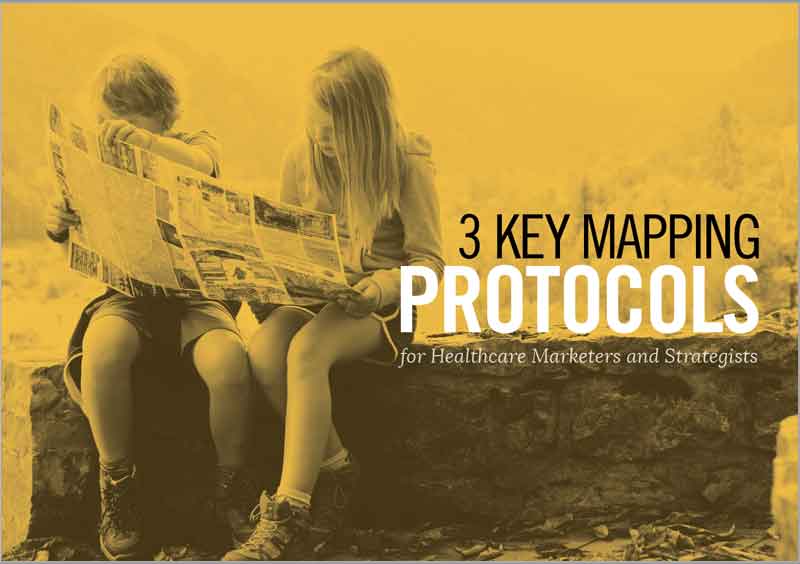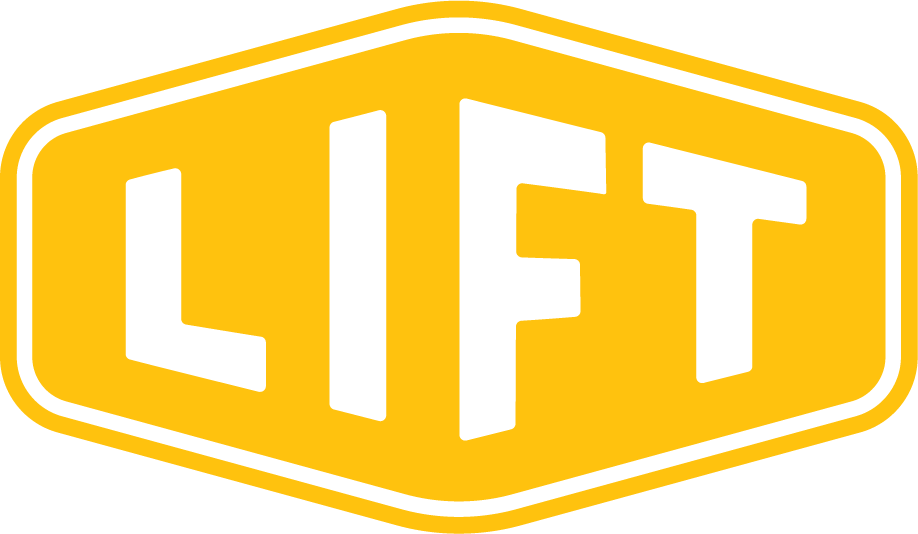Mapping Consumer Journeys (and More) for Effective Healthcare Marketing
We all know patients want help navigating their health and well-being. Research and observation show that patients and caregivers appreciate authentic and purposeful engagement that is rooted in their realities. Today’s healthcare consumers have a multitude of information and technology at their fingertips. How do we grapple with this dynamic in healthcare marketing and strategy?
How do we know whom to reach when and with what message? From initiating and maintaining meaningful communication to cultivating interactions that extend into lifelong relationships, one might expect that to be successful, marketers need and are expected to be omniscient—all-seeing and all-knowing at all times. Knowing these expectations and the growing stakes of consumer engagement, how can we get a grasp on the values, needs, and motivations of individual people without losing sight of the big picture: compelling the community at-large to be more engaged in their health?
While it’s cliche to say, mapping helps you see the forest from the trees. It’s crucial that we map various aspects of the healthcare transaction to better understand the data we collect and to articulate the best path forward.
Picking the Right Map(s) for the Job
There are several forms of maps, and they are varied in their functions. Journey mapping provides an excellent visual representation of findings and realities at ground level. These tools are extremely helpful when presenting insights to clients and related stakeholders. Maps are even more valuable when you leverage insights and findings into the marketing, communication (internal or external), and patient education programs that you design and implement.
- Journey Maps: A healthcare consumer journey map is a visual representation of the process a patient or stakeholder goes through to achieve a goal related to his or her health and well-being. With the help of a journey map, you can get a sense of your stakeholder’s motivations, target actions, and messaging to impact a positive outcome.
- Expectation Maps: Expectation mapping is a way of visualizing the patient or stakeholder’s emotions within the context of engaging with a specific healthcare product, service, or even general wellness. These maps are an excellent way to explore and understand the evolving expectations of what a quality healthcare experience should feel like.
- Stakeholder Maps: Stakeholder mapping can help you make sense of the needs and efforts of various players that comprise healthcare interactions and shed light on the relationships between those players. They can also help you visually depict and process the range of individuals involved in the interaction with your product, service, or experience from within and outside of the healthcare organization.
- Language Maps: A language map (also known as a linguistic map) is a thematic map illuminating the geographic (or, even more locally, internal) distribution of the various speakers of certain languages within your healthcare delivery environment or the community you serve.
- Context Maps: A context map is the high-level view of a service environment or healthcare ecosystem as a whole. Consisting of various micro or bounded-contexts (at home versus in a clinic), a formal healthcare context map illuminates how communications might be shared or implemented across the entire system.
- Message Maps: A message map is the basic framework used in creating compelling, relevant, and engaging messages for various healthcare audience segments (patient, caregiver, and internal stakeholder). A message map can also serve as an organizational alignment tool to ensure consistency. These maps are excellent for designing and implementing messages across multiple stakeholder channels.
- Needs Maps: A needs map is generally intended to help map the needs of various stakeholders and illuminate ways to impact stakeholders in a productive manner. There are many needs at play within a given encounter, and all stakeholders have both primary and secondary needs. Needs maps focus on ‘behavior levers’ that can create behavior change in healthcare. Primary needs can be appreciation, acceptance, or approval. Secondary needs might be admiration, pity, intelligence, or power.
- Asset Maps: Asset mapping is a way of understanding the strengths and resources of a department, cohort, or the community at-large. They are an excellent way to uncover potential solution designs. Once you illuminate stakeholder strengths and resources in a map, healthcare strategists and designers can more easily think about how to leverage the various assets to address organizational or community needs and improve health and well-being.
“Double Clicking” on Journey Mapping for Healthcare Marketing
Every patient has a unique consumer journey, and they generally want to do the right thing. It is important to seek intersections of common reality and to illuminate the needs and interests of multiple stakeholders in a way that is relatable and effective. One of the most important and desirable tool sets for healthcare marketers and strategists interested in impacting patient experience is mapping.
Healthcare consumer journey mapping can help elevate perspectives in the tactical trenches of work and provide a more objective and holistic view of a stakeholder’s journey–where they’ve been, where they are, and where they want to go. And, perhaps most importantly, mapping can give you the foresight needed to inform strategic and tactical decisions that empower stakeholders to allow you to walk the path with them.
Best Practices for Healthcare Consumer Journey Mapping
Consider the following best practices when journey mapping to ensure that they are strategically relevant to your healthcare consumers, stakeholders, and healthcare organization as a whole:
- Put on Your Walking Shoes. How often does your team spend time in the field? Commit to uncover the “why” behind the need for marketing a new service or physician. Step into the consumer’s shoes and head for the hospital. Approach and analyze current processes from different points of view to identify opportunities for authentic messaging and redesign. Connect on a human level to find compelling reasons why patients would want to engage with your organization.
- Look Outside for Insight. Take time to pinpoint what need your healthcare institution fills in the local community. Evaluate the role that you play and the value that you contribute—where is your organization present and what is the exchange between your organization and the community? Rethink the passive notion of “if you build it, they will come”—because today, this is not guaranteed. Equip yourself and your team with context rooted in active involvement in the community—use their words to inform yours.
- Commit to the Details. Every time a consumer comes into contact with your organization, it’s a moment to enhance or hinder their perception. An ad, a road sign, the tone of a receptionist, the traffic pattern around the parking lot, word of mouth about your services expressed between friends, the navigation inside the hospital, the demeanor of staff, and so on, are each an expression of the brand and voice of your organization. Build into your processes opportunities to exchange perspective with patients and their families—what are they seeing that you don’t? What barriers exist to serving their needs?
Remember: when change is the only constant, we must be prepared to embrace a new way of approaching our work—rolling up our sleeves and delving into the intersection of both human and technological experiences. Balance is needed to appropriately engage with consumers and to meet them where they are. Challenging the conventions of healthcare marketing strategy by exploring the consumer journeys firsthand is a valuable place to begin. Walking in your patients’ shoes to see what they see, hear what they hear, and feel how they feel—only then can you successfully anticipate and design an impactful healthcare experience.

Download our step-by-step guide to journey, expectation, and stakeholder mapping now
When conducted thoughtfully, mapping can be a powerful design tool in the hands of healthcare marketers and strategists. While there are many different methods at your disposal, they all have the ability to help structure your perceptions, mitigate your own personal biases, and provide you with focused and contextually relevant windows into the lived experiences of your stakeholders.
Ready to get started? We’ve prepared a handy PDF with step-by-step instructions for implementing the three most frequently used protocols (journey, stakeholder, and expectation mapping) to help you get started today.
